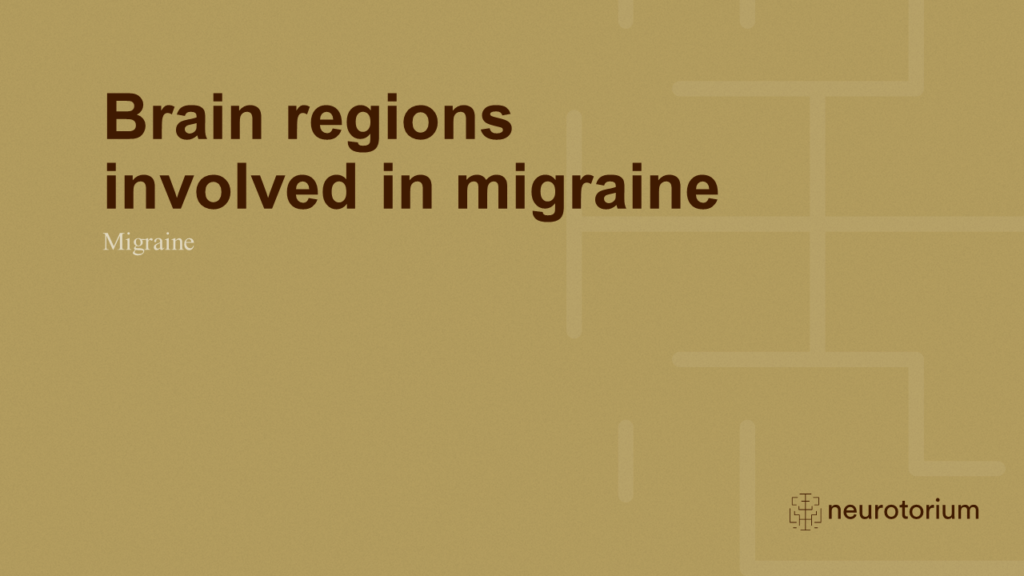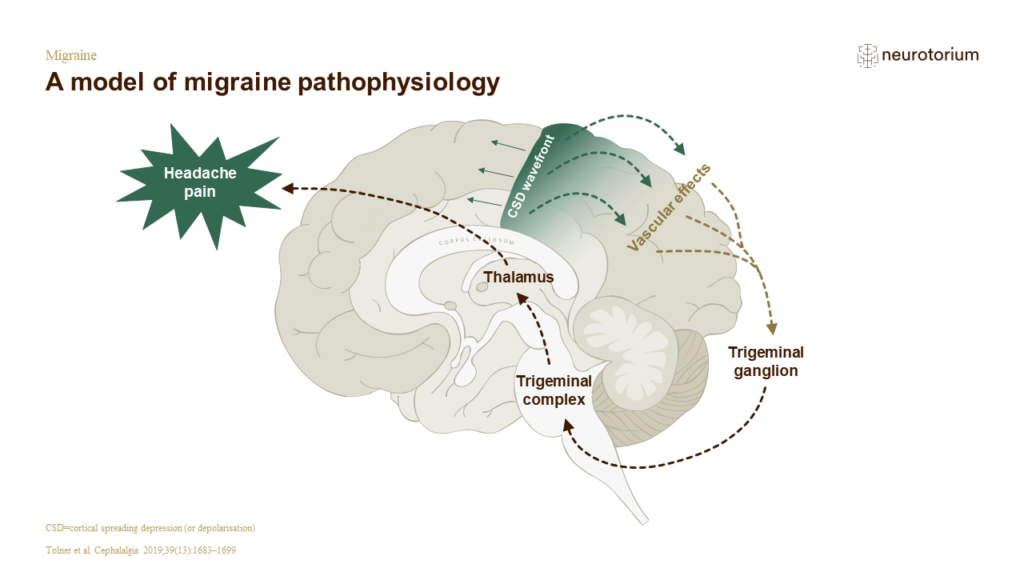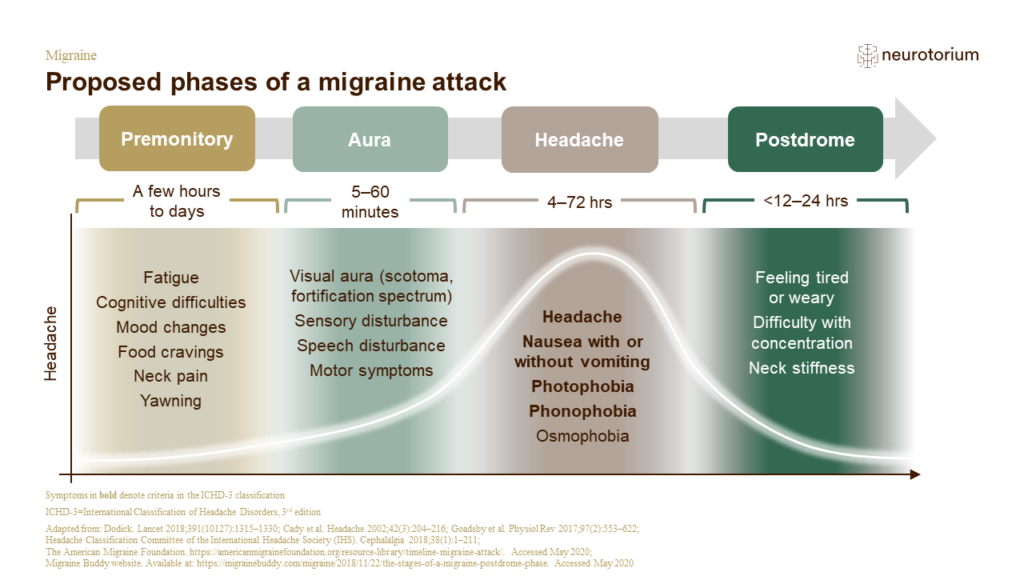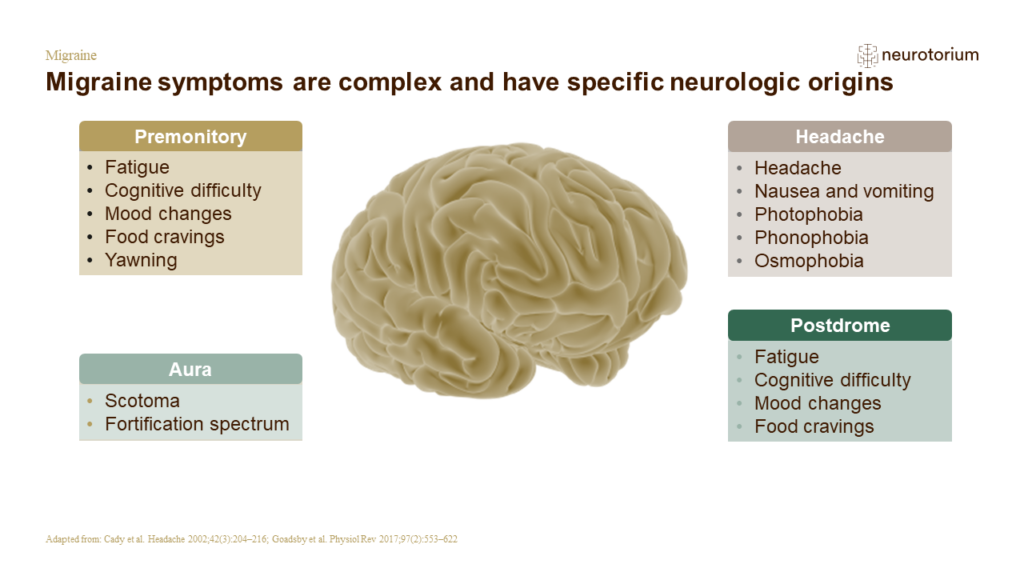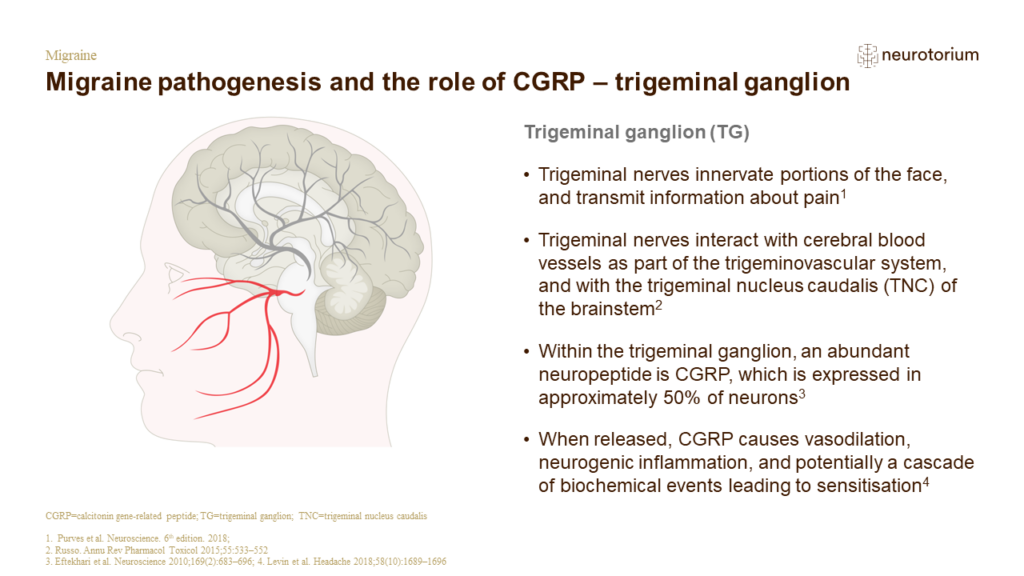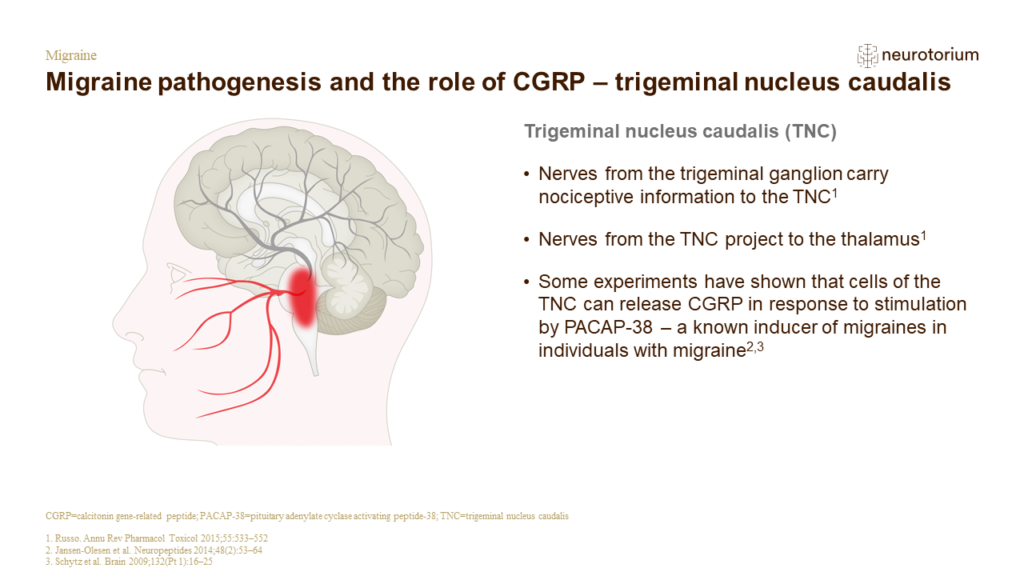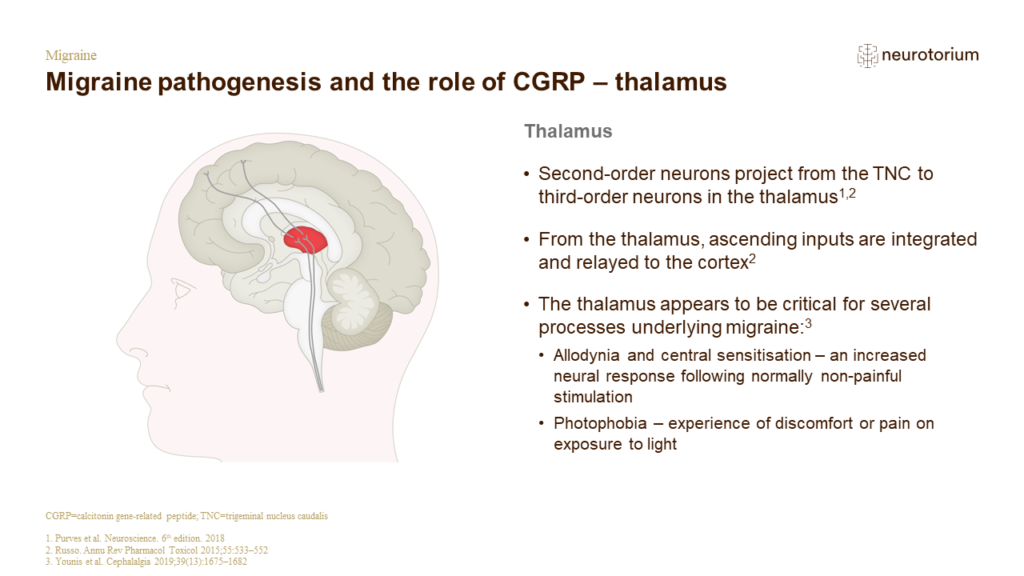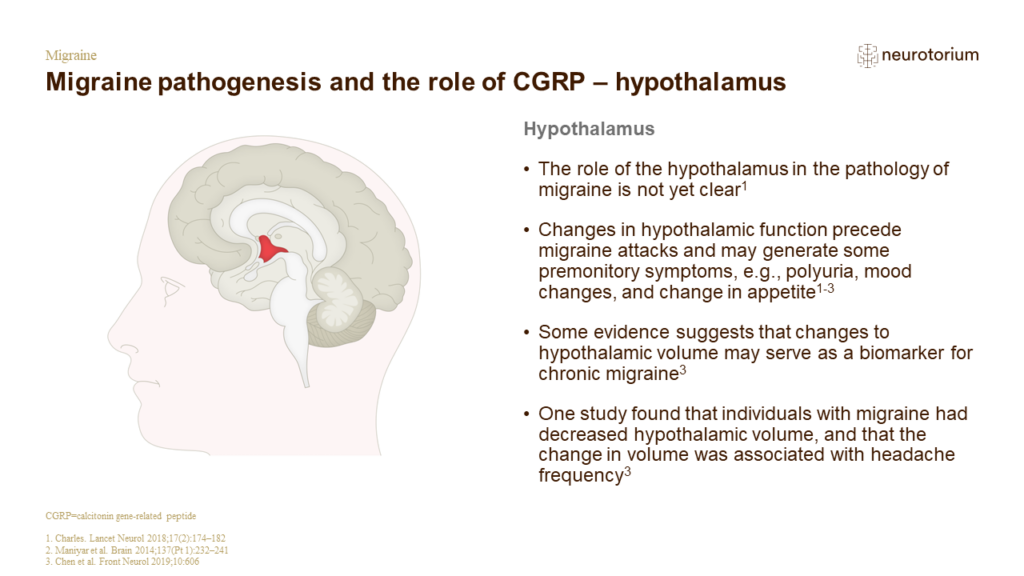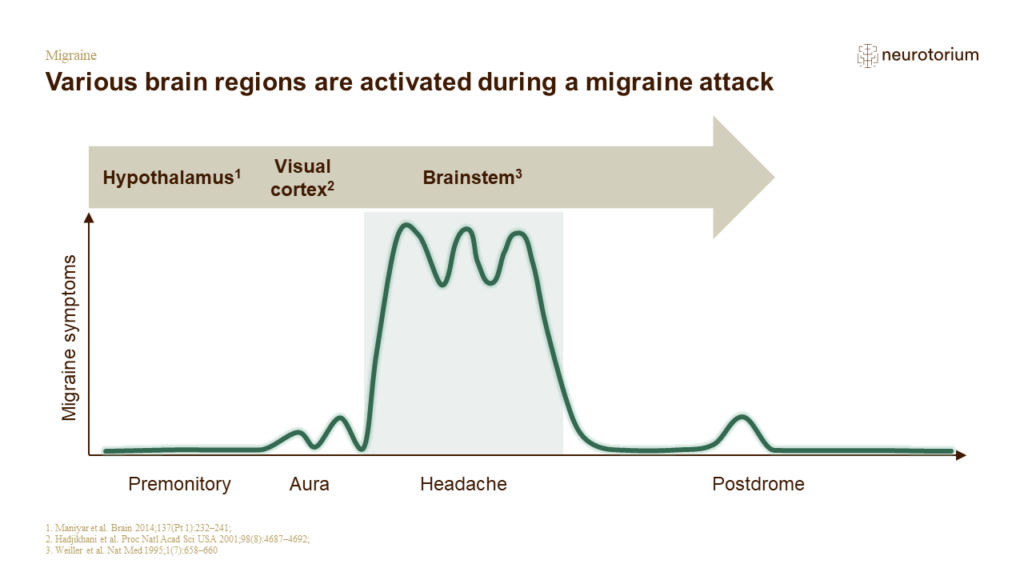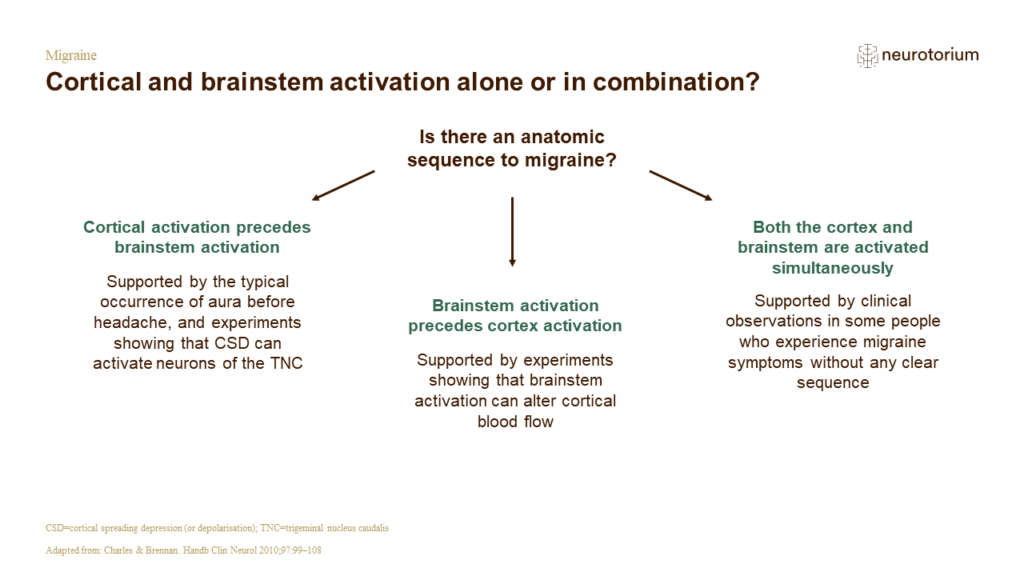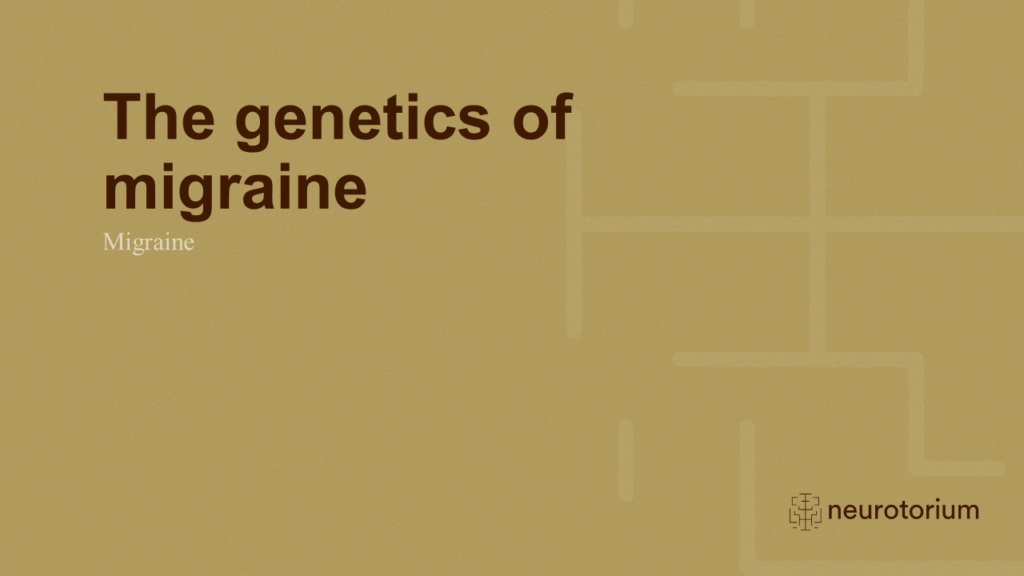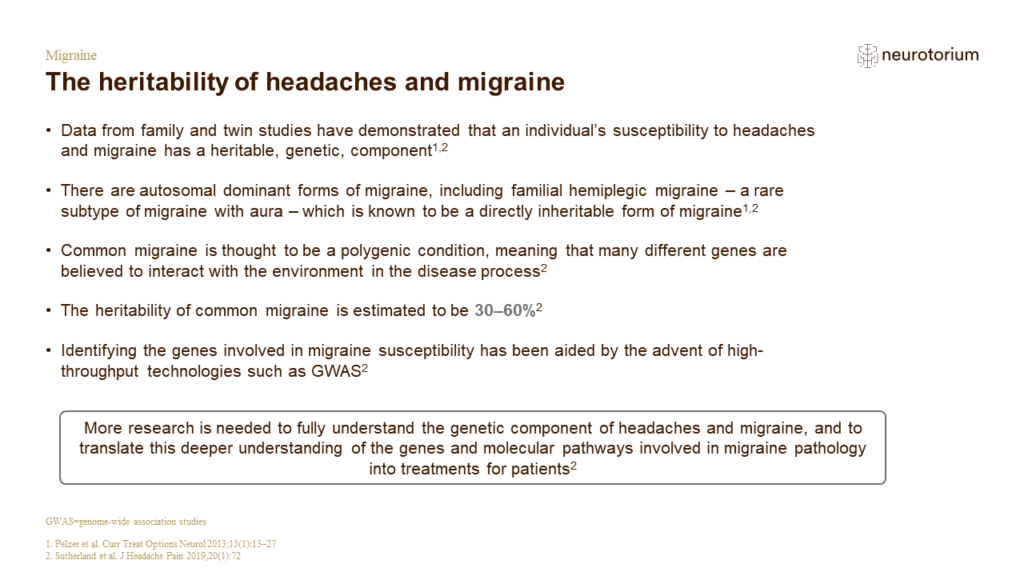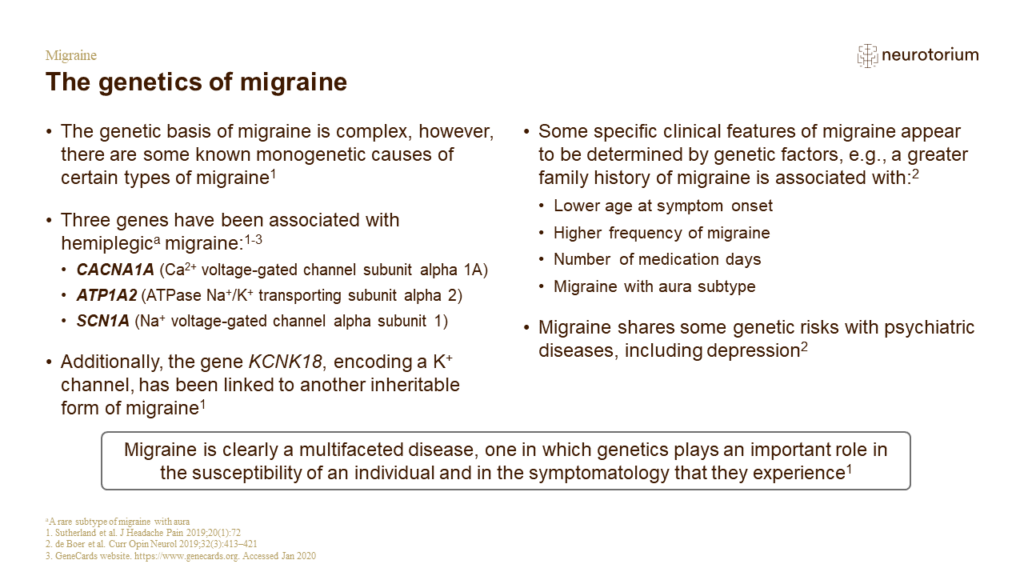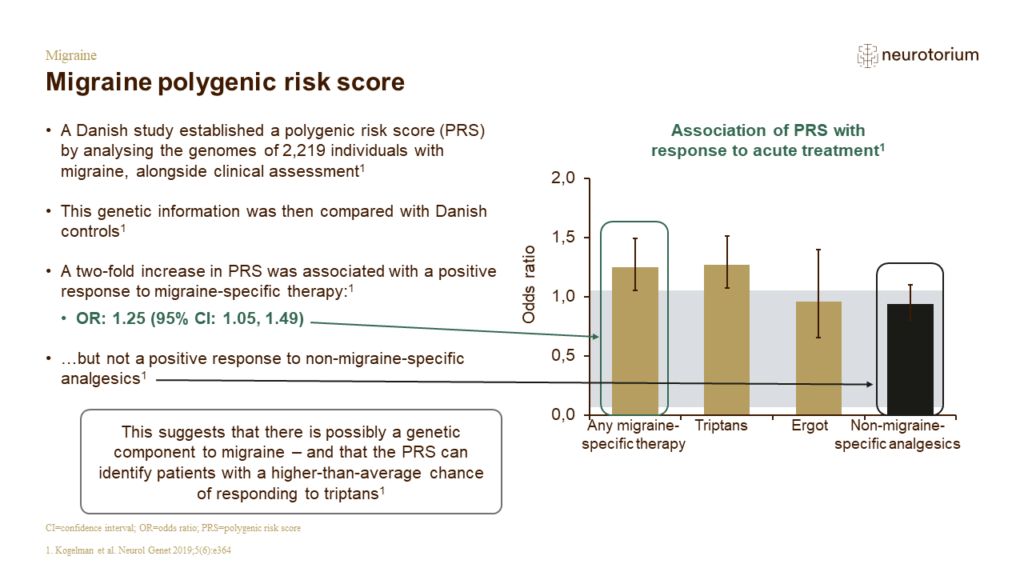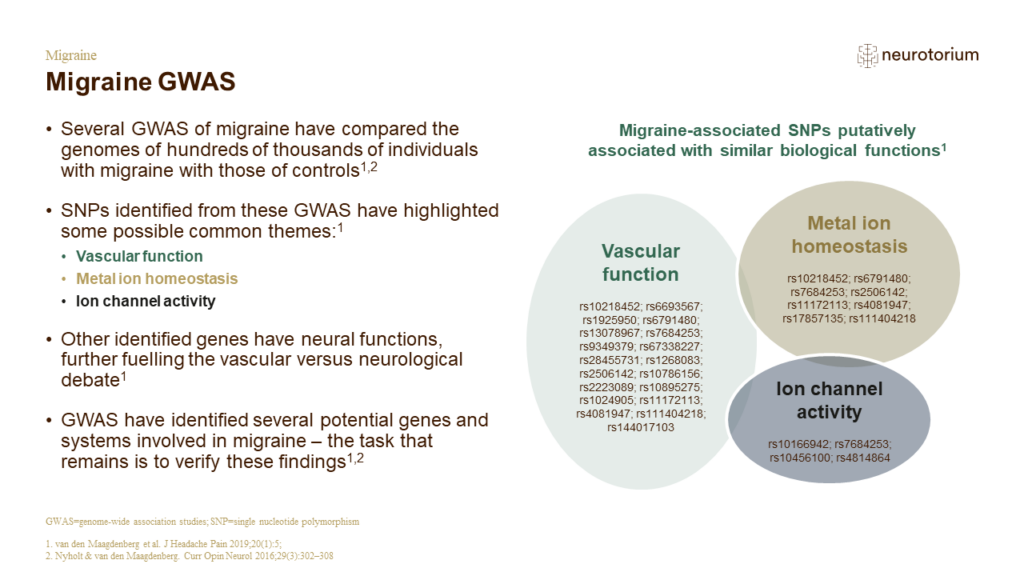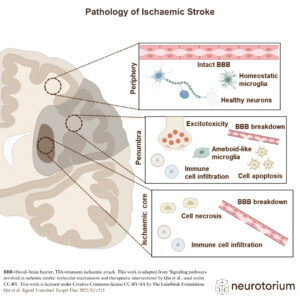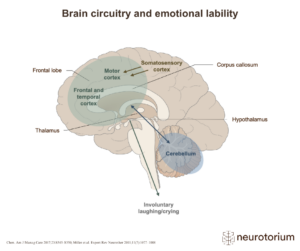Index for
slide deck
Neurobiology and aetiology
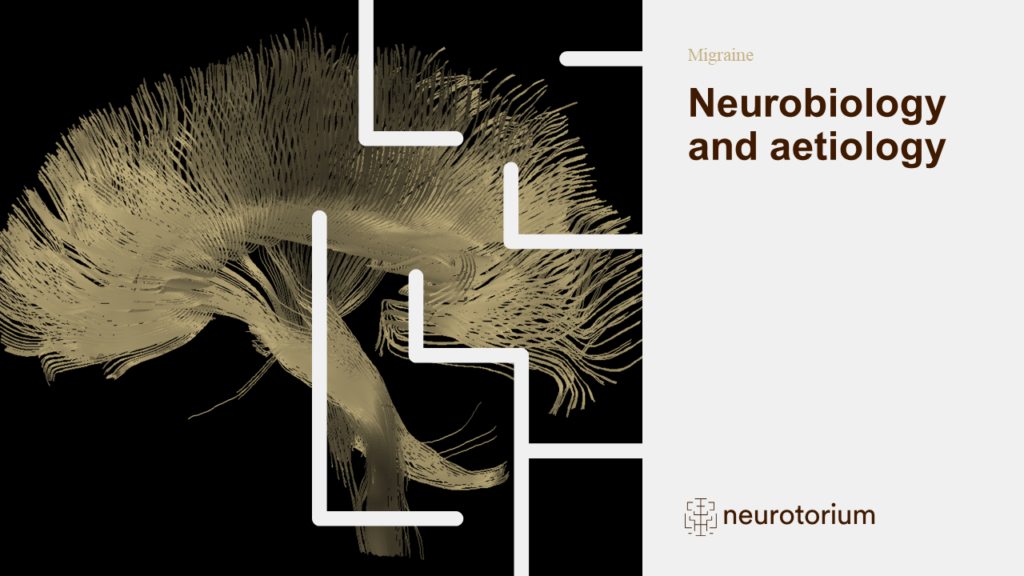
Migraine - Neurobiology and aetiology
Pain and nociception
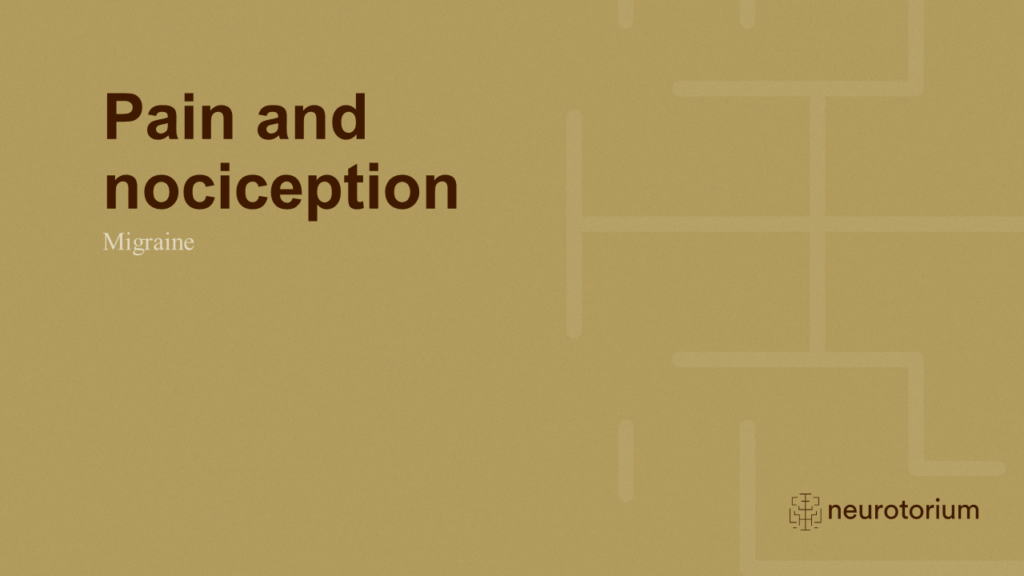
Pain and nociception
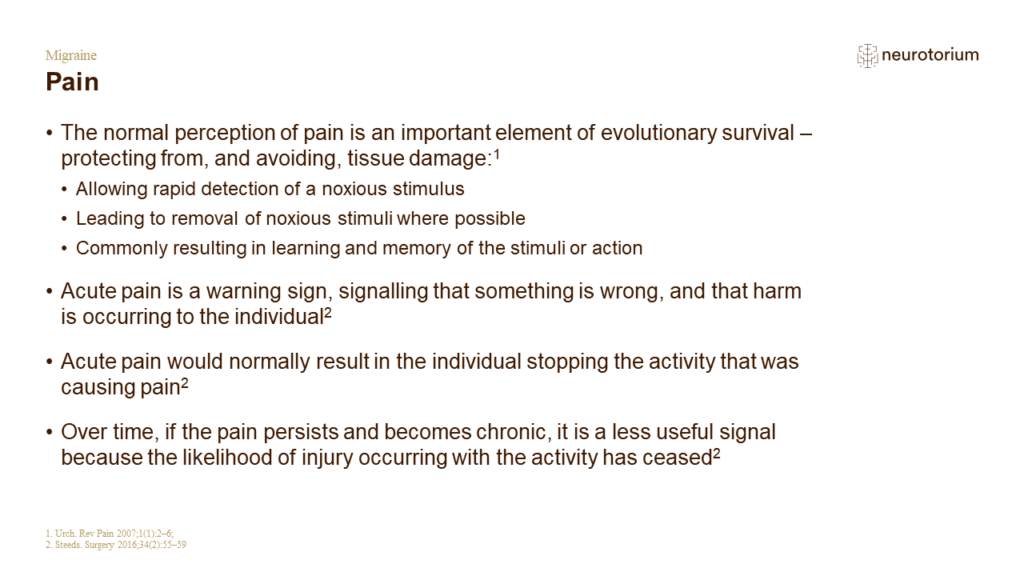
Pain
There have been many attempts to classify and define pain, and discussions about the nature of pain versus nociception.[Kumar & Elavarasi, 2016; Treede, 2018] In 1979, the International Association for the Study of Pain (IASP) defined pain as “an unpleasant sensory and em…
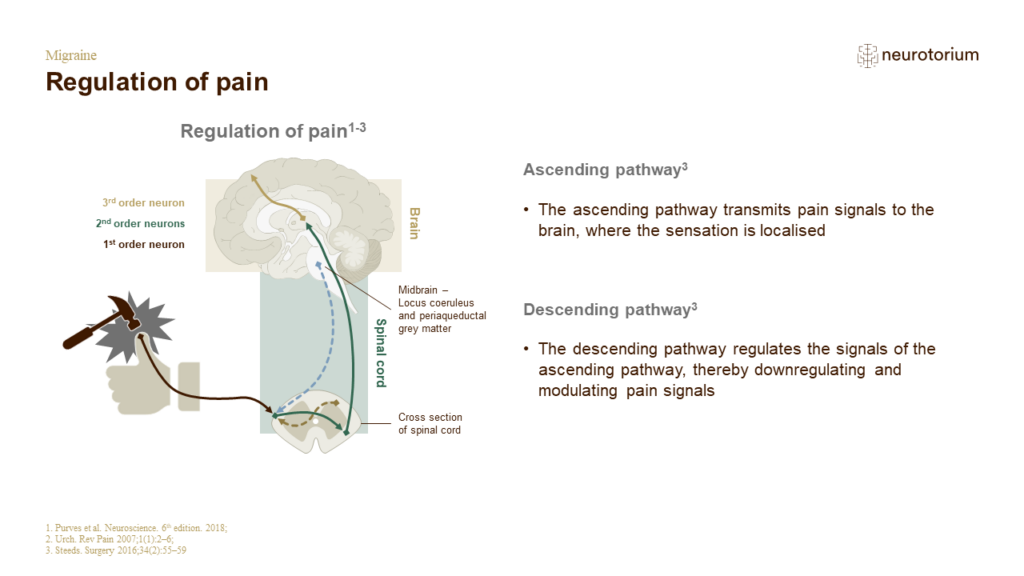
Regulation of pain
Transmission of pain involves a complex series of interactions, described on the slide.[Steeds, 2016] First-order, afferent neurons convey the signal from the site of injury, and synapse with second-order neurons in the dorsal horn of the spinal cord.[Steeds, 2016] Tracts…
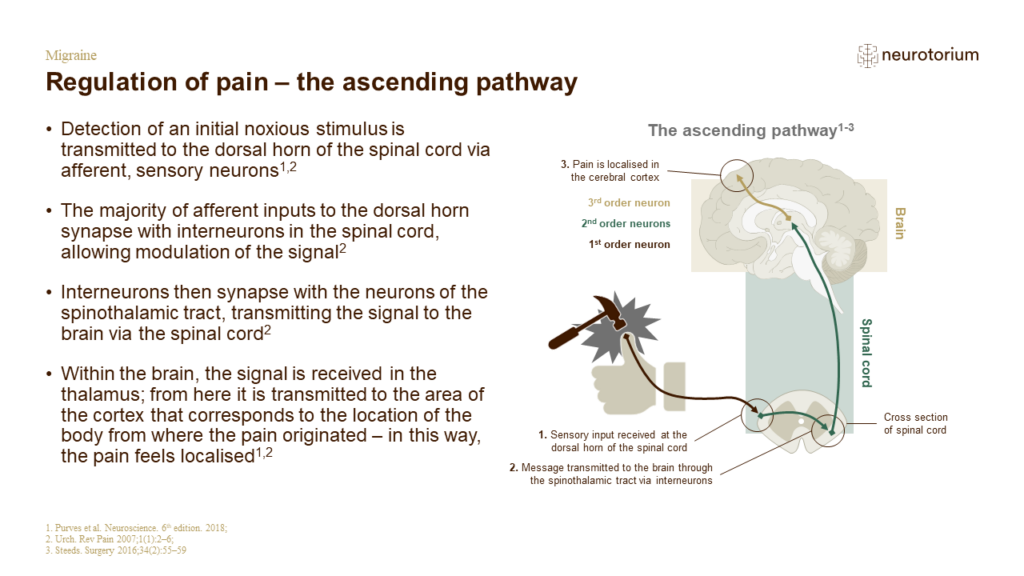
Regulation of pain – the ascending pathway
Transmission of pain involves a complex series of interactions, described on the slide.[Steeds, 2016] First-order, afferent neurons convey the signal from the site of injury, and synapse with second-order neurons in the dorsal horn of the spinal cord.[Steeds, 2016] Tracts…
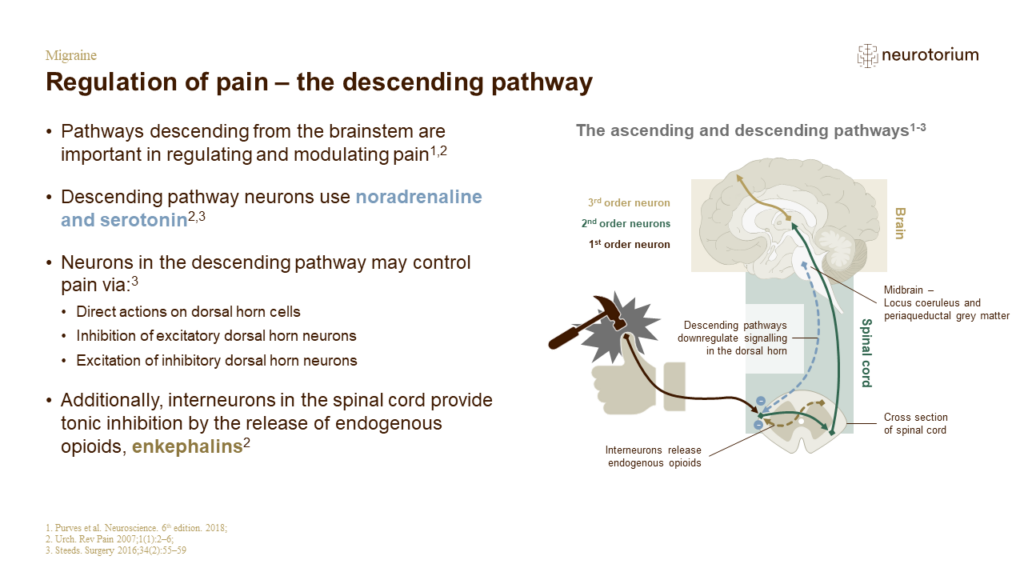
Regulation of pain – the descending pathway
The ascending pathway, which transmits sensations of pain to the brain, is regulated by neurons that descend from the brainstem – the descending pathway.[Steeds, 2016] These noradrenergic and serotonergic neurons downregulate the activity of neurons of the dorsal horn, th…
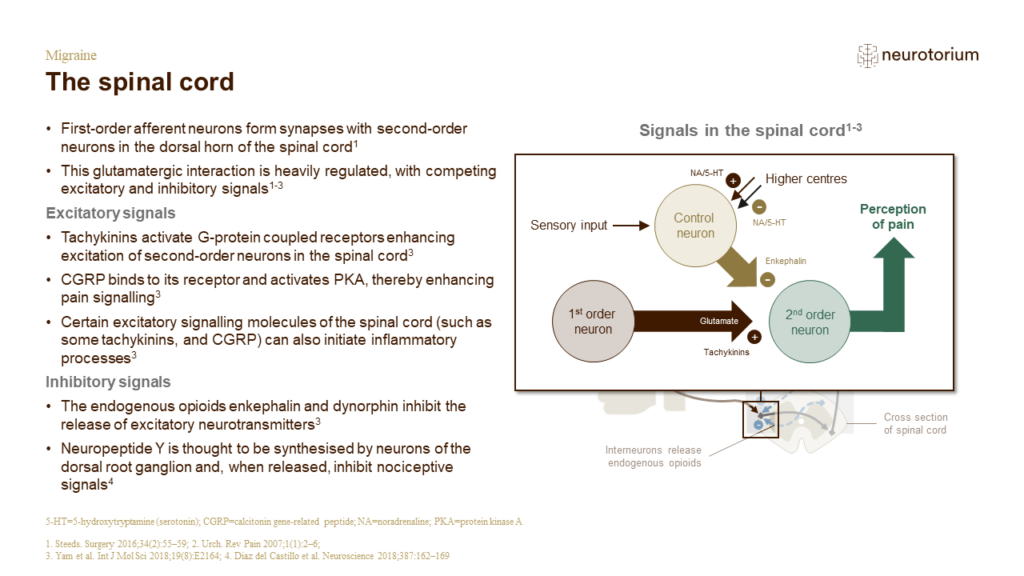
The spinal cord
Modulation of pain signals in the spinal cord is achieved by fine-tuning the various positive and negative signals that control the interaction of the first-order neuron with the second-order neuron.[Steeds, 2016; Urch, 2007; Purves et al., 2018] Within the dorsal horn of…
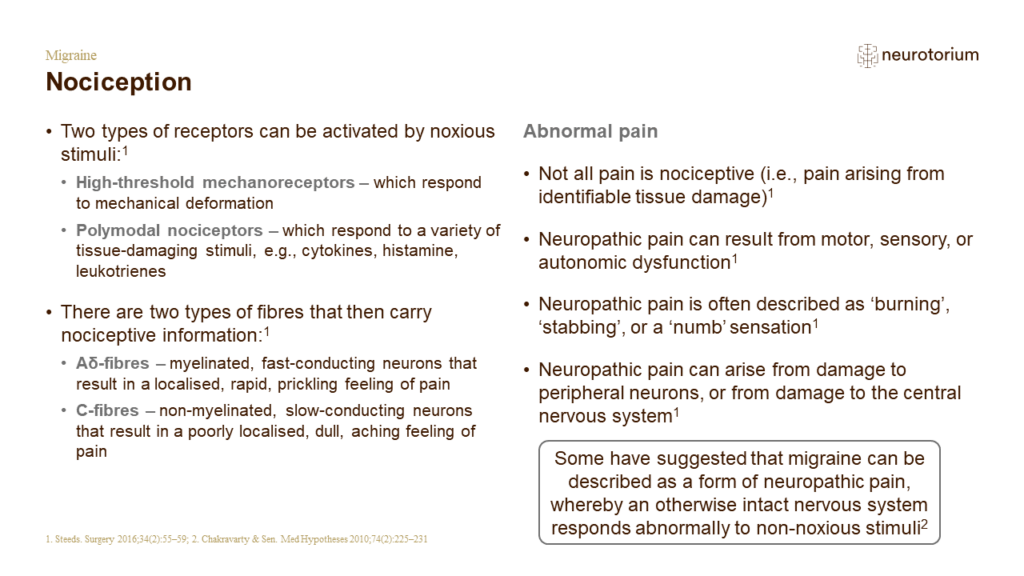
Nociception
In the last century, neurons have been classified according to conduction velocity, into groups A, B, and C.[Purves et al., 2018] However, as more became known about neurons, different classifications arose within the groups, and entirely different groups arose for classi…
The pathology of migraine
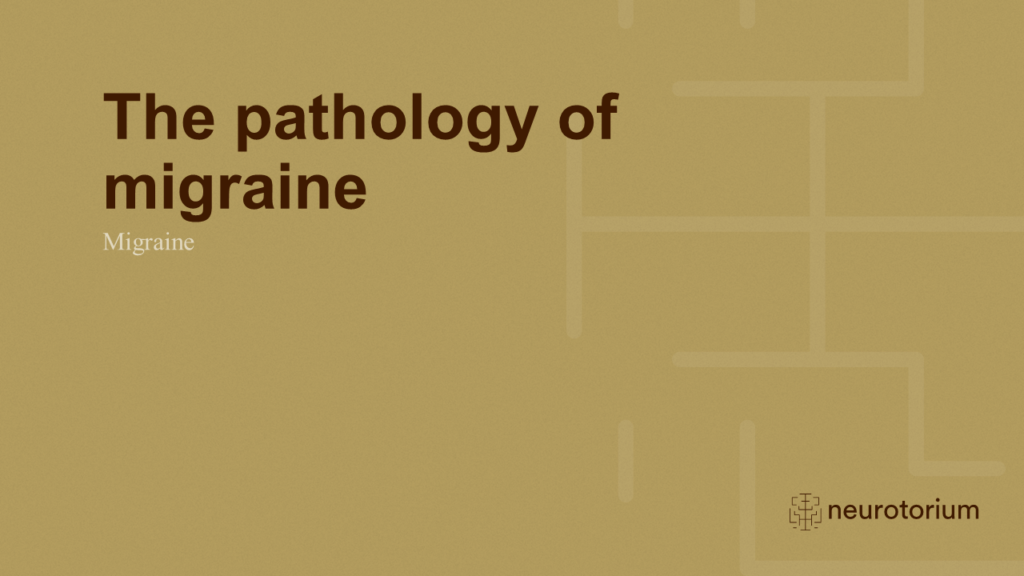
The pathology of migraine
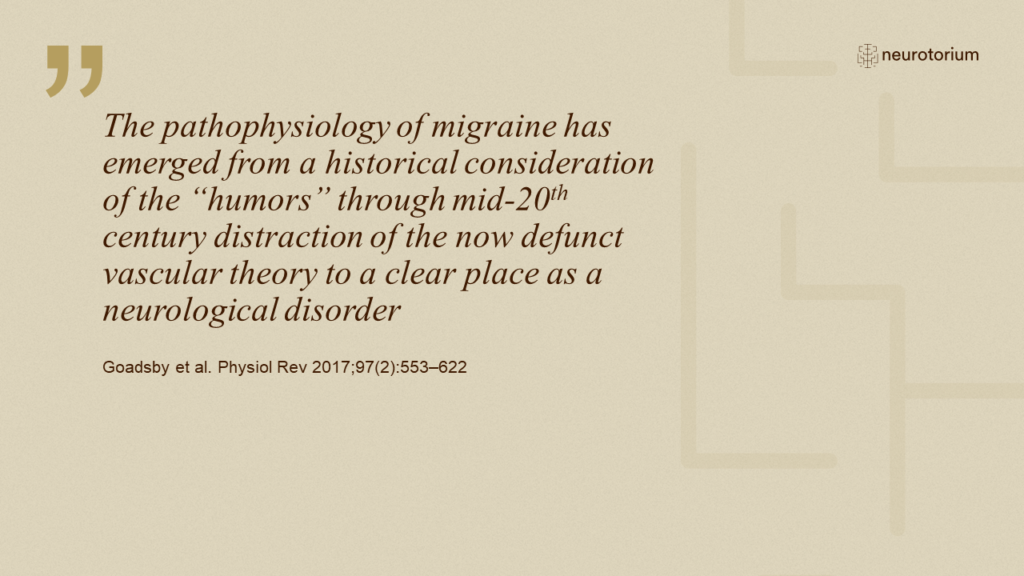

Timeline of migraine research
Over the last century, there has been much progress in understanding the pathology underlying migraine.[Tfelt-Hansen & Koehler, 2011] Key scientific and clinical milestones are detailed on the slide, including some of the key events in the development of migraine therapie…
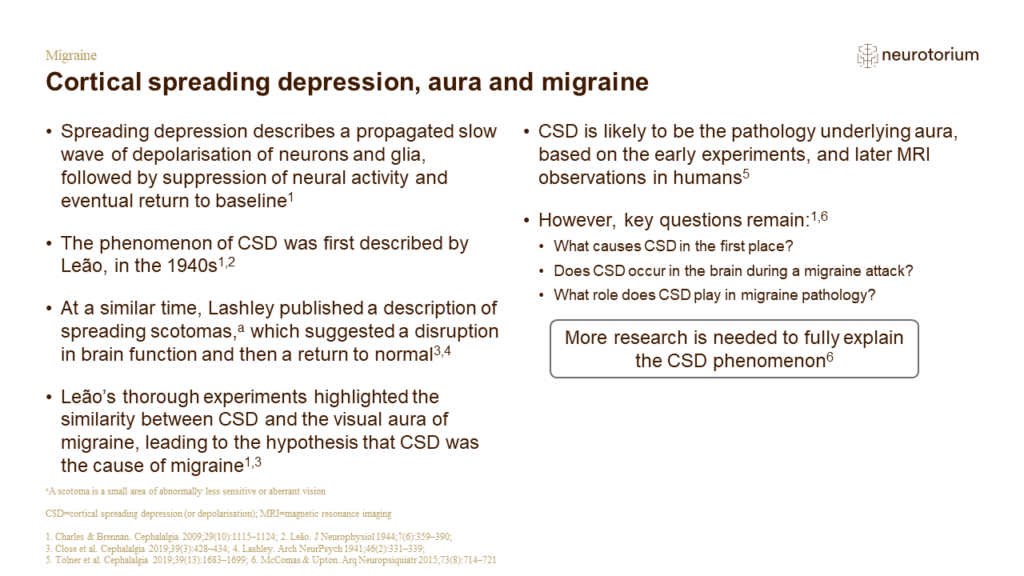
Cortical spreading depression, aura and migraine
Critics of CSD have long pointed out that, although observed in animal studies, CSD has not been consistently observed using electroencephalograms (EEG) in humans with migraine.[Charles & Brennan, 2010] Furthermore, CSD would be expected to have quite profound effects on …

Cortical spreading depression
The seminal publication of Aristides Leão in 1944 reported the experimental ability to temporarily suppress electrical activity in an area of the brain (specifically, a rabbit brain), and this suppression then slowly spread into neighbouring areas.[Leão, 1944] This spread…
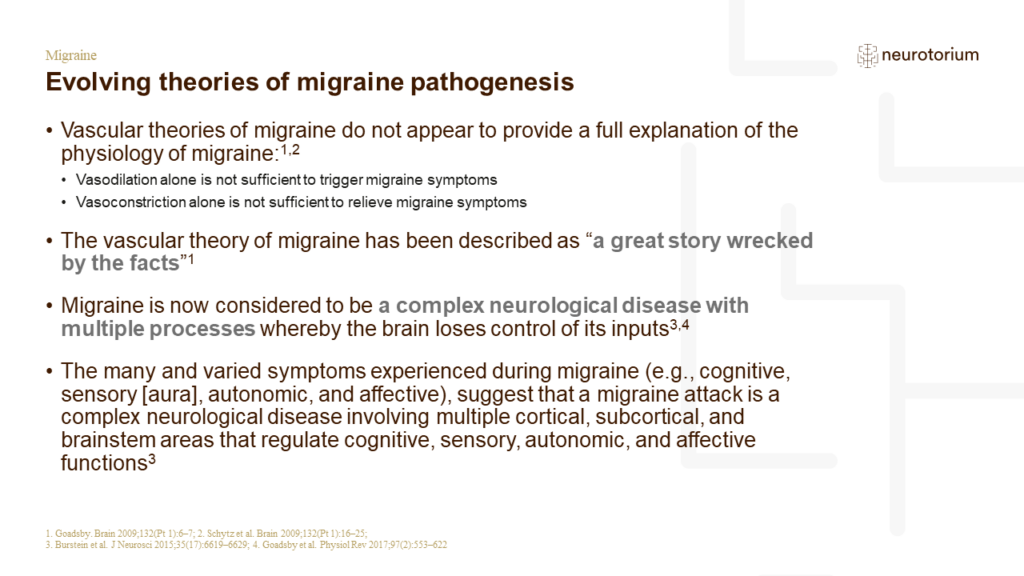
Evolving theories of migraine pathogenesis
From the perspective of the patient, viewing migraine as a neural condition is potentially a good thing.[Goadsby, 2009] The generation of vasoactive drugs that have been used in the treatment of migraine have the potential to cause vascular complications.[Goadsby, 2009] T…
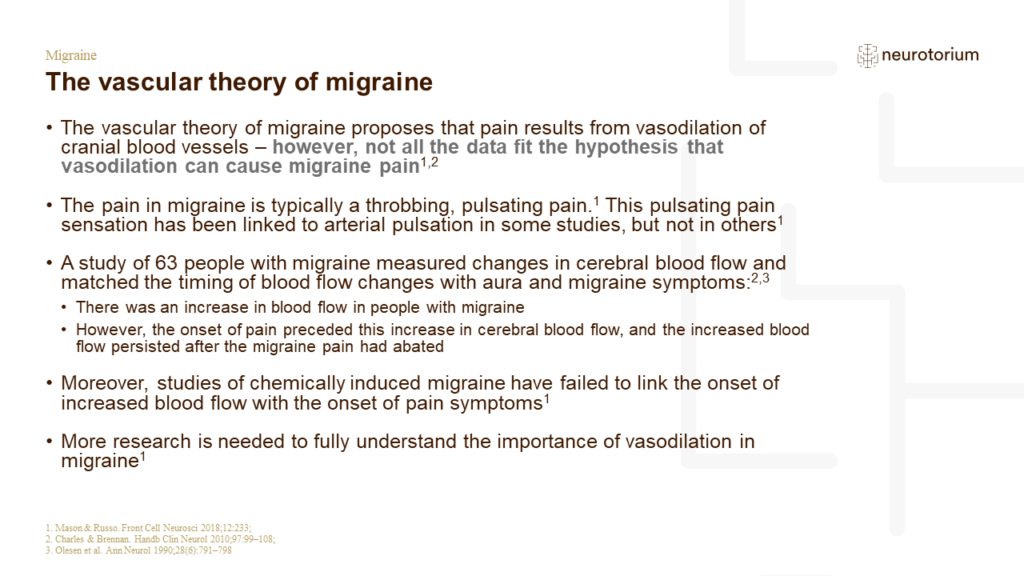
The vascular theory of migraine
One of the first therapies for migraine – an ergot alkaloid – works by vasoconstriction; this led to attempts to unravel the pathology of migraine by focussing on the vasculature.[Mason & Russo, 2018; Charles & Brennan, 2010] However, although vascular changes do occur du…
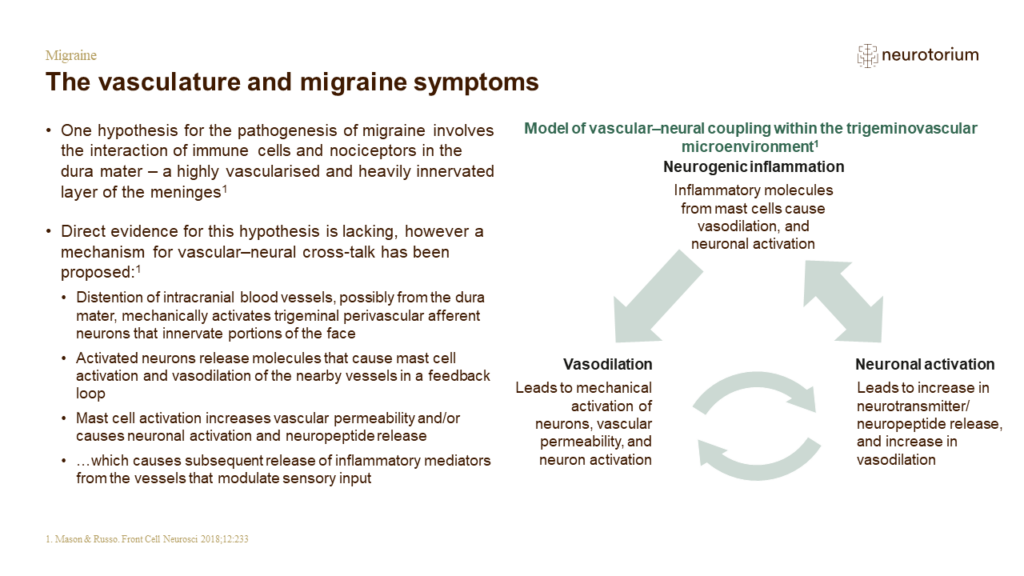
The vasculature and migraine symptoms
It has been argued that the therapeutic value of some vasoactive chemicals to treat migraine symptoms, and the fact that other vasoactive chemicals can cause migraine, means that vascular contributions to the pathology of migraine are more than peripheral.[Mason & Russo, …
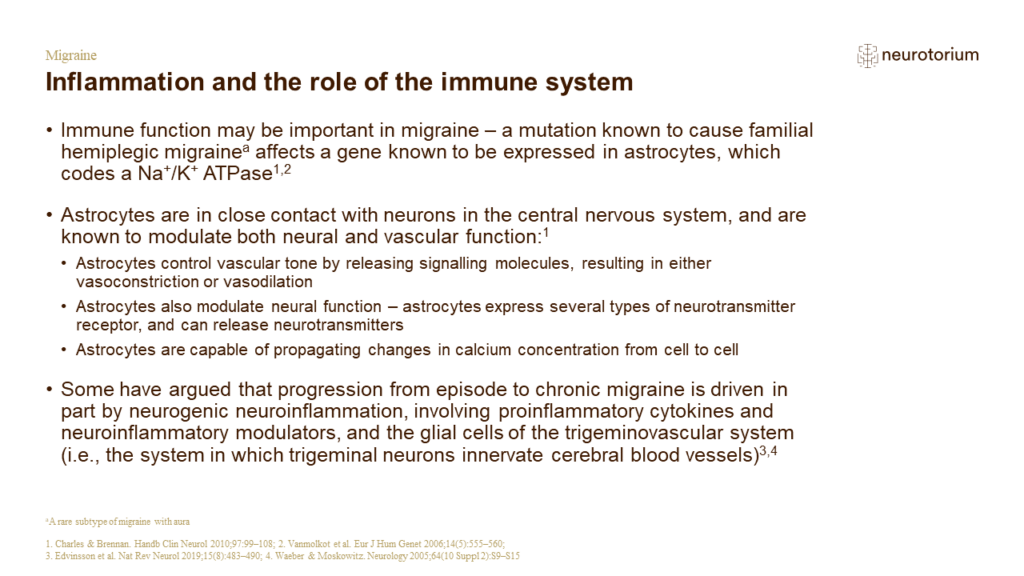
Inflammation and the role of the immune system
Migraine has not classically been considered an inflammatory condition, perhaps because, other than pain, migraine is not obviously associated with signs of inflammation (redness, heat, and swelling).[Waeber & Moskowitz, 2005] A question that immediately arises, then, is …
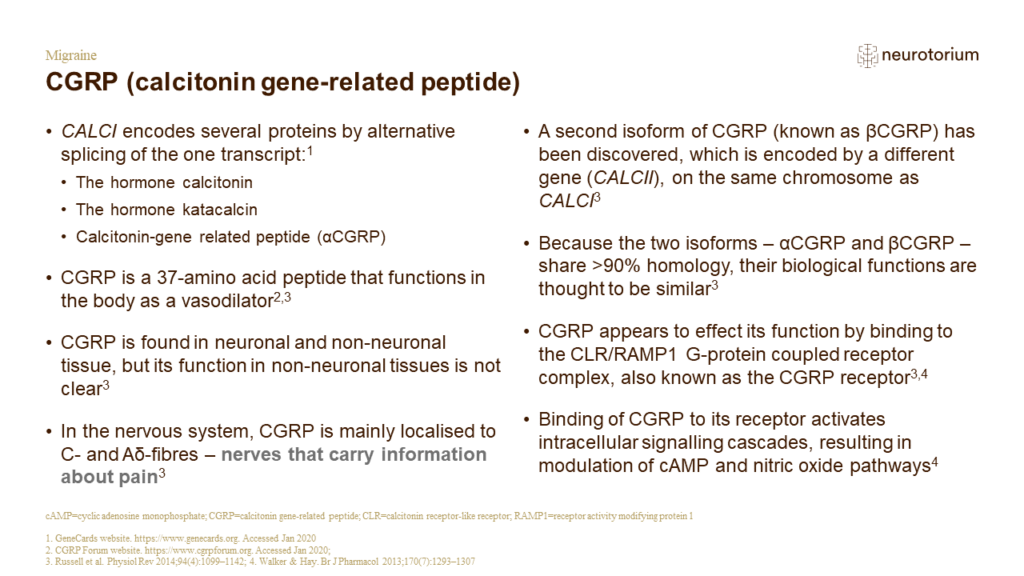
CGRP (calcitonin gene-related peptide)
The CALCI gene encodes several different proteins.[Russell et al., 2014] This is achieved by alternative splicing, whereby certain portions of the code are removed from the RNA transcript that is used to produce a protein.[Russell et al., 2014] In the case of CALCI, splic…
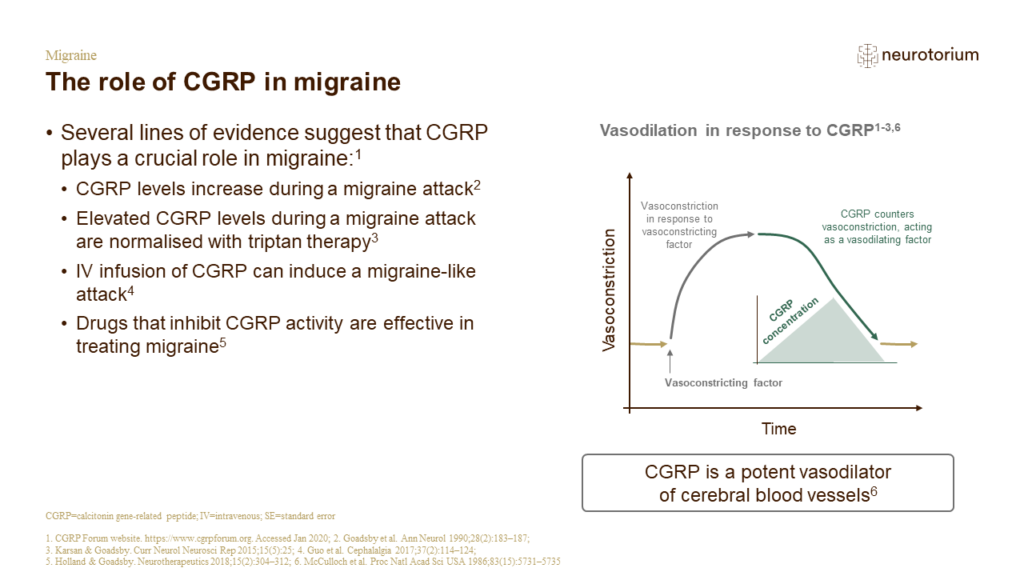
The role of CGRP in migraine
A series of seminal experiments showed that CGRP was released into the blood during the headache phase of a migraine – in people with and without aura.[Goadsby et al., 1988; Goadsby et al., 1990] The levels of other peptides, e.g., substance P or neuropeptide Y, were unal…
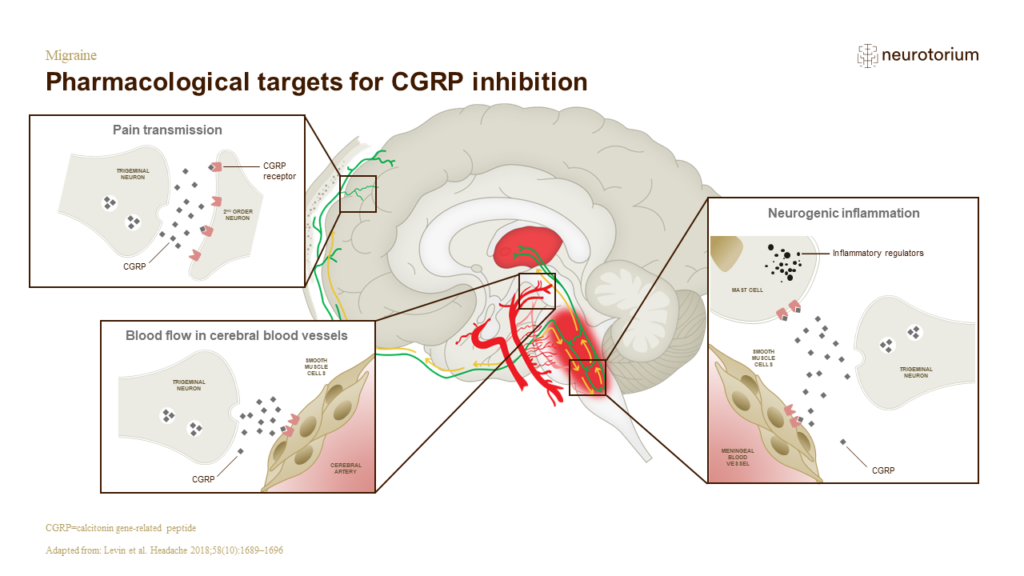
Pharmacological targets for CGRP inhibition
The CGRP peptide exerts its influence by binding to a CGRP receptor and activating intracellular signalling pathways, such as the cAMP (cyclic adenosine monophosphate) pathway.[Levin et al., 2018] By interacting with second-order neurons passing on a nociceptive signal, i…
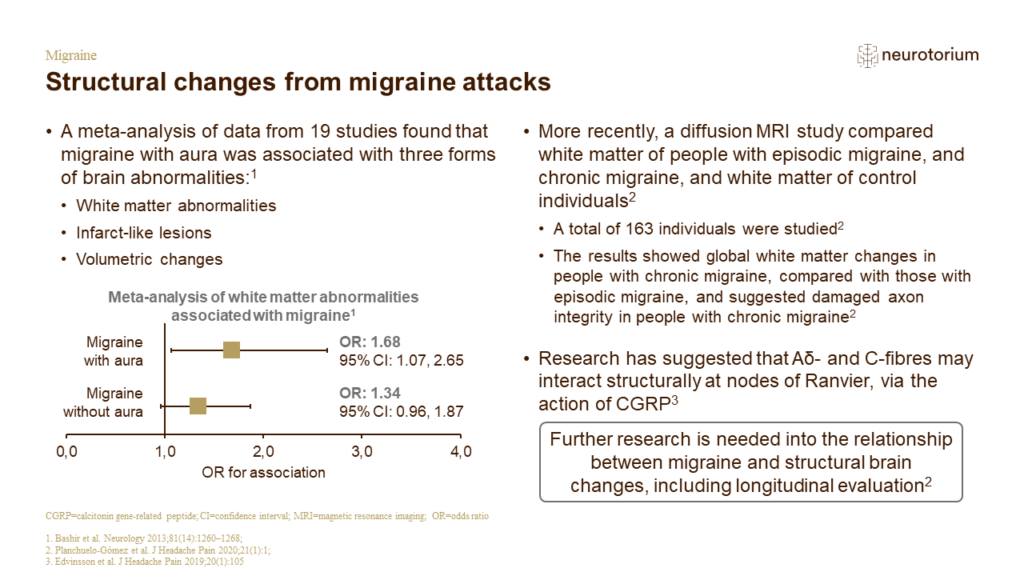
Structural changes from migraine attacks
It has been much debated over the years whether or not the recurrent attacks that typify chronic migraine result in damage to the brain.[Bashir et al., 2013; Planchuelo-Gómez et al., 2020] However, with mounting evidence that people with migraine are at an increased risk …


